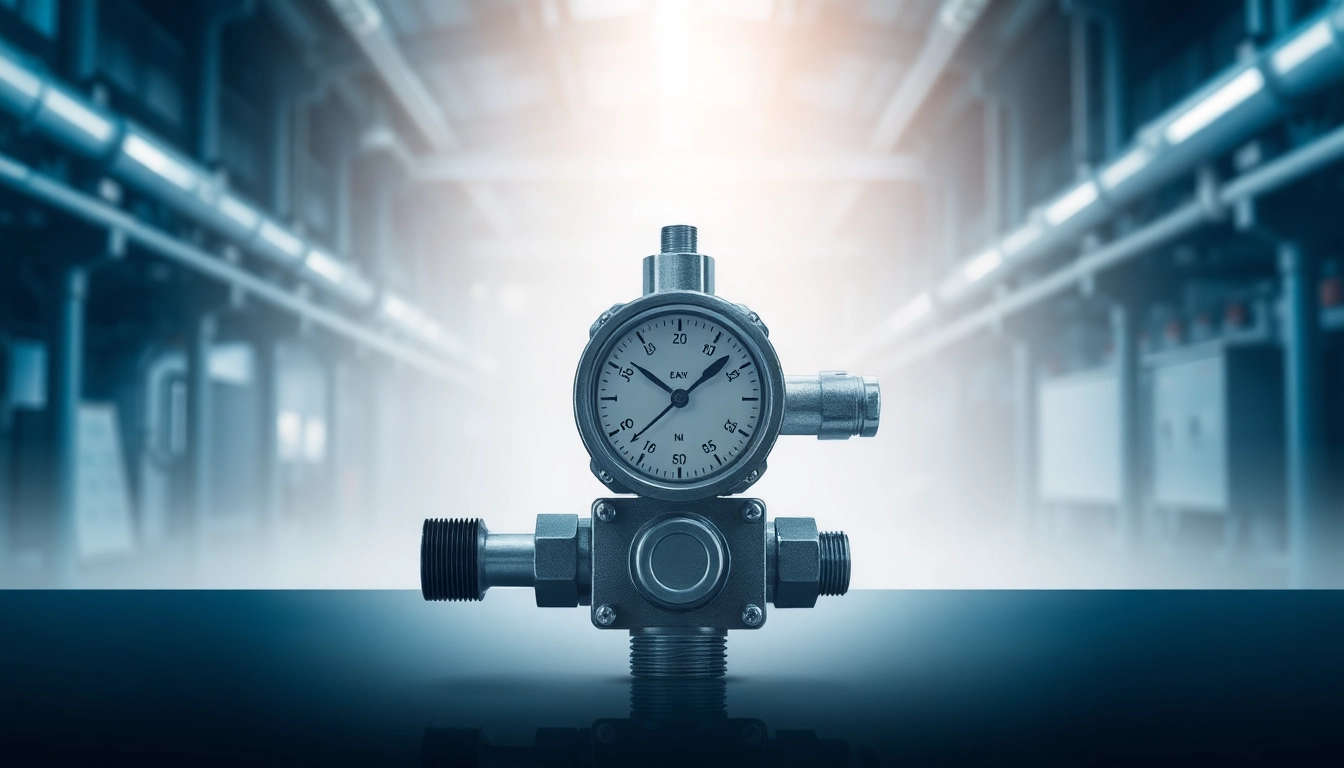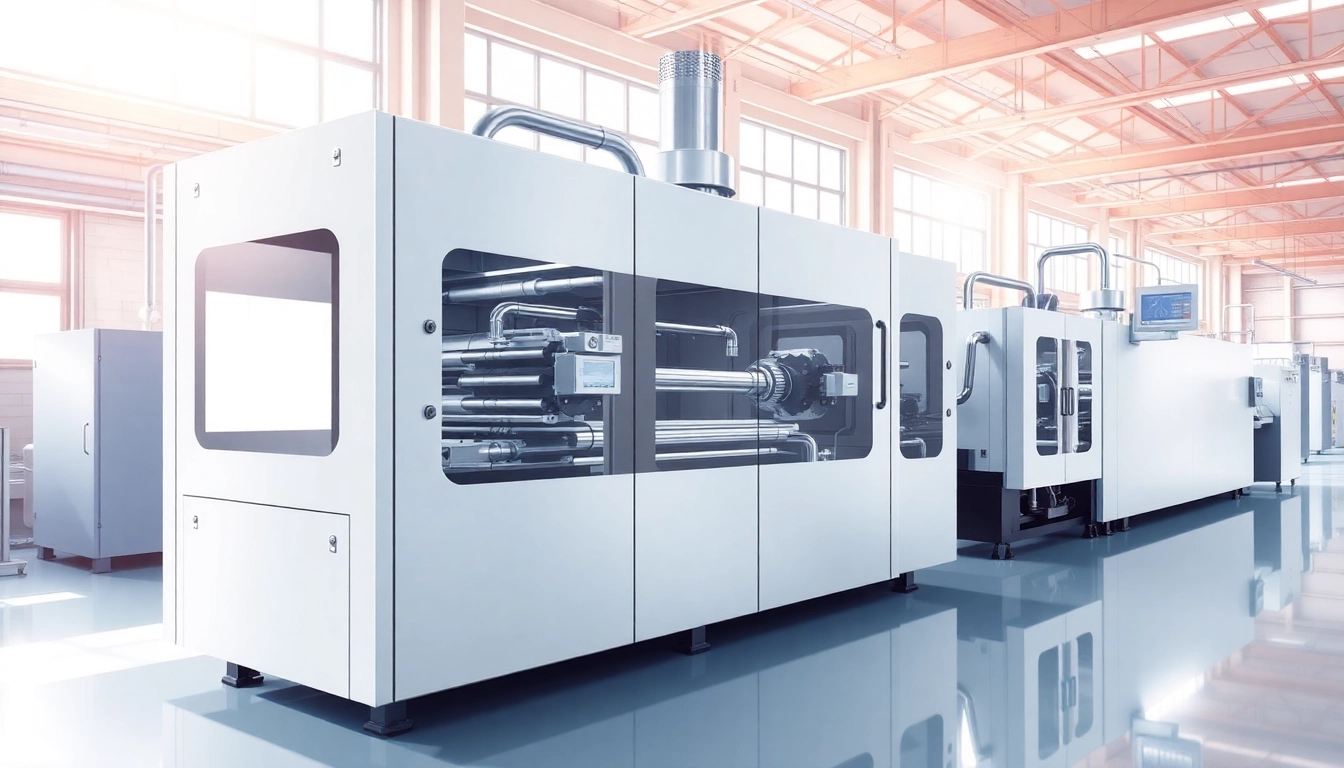Understanding Nitrogen Regulators
Nitrogen regulators are crucial tools within various industrial and chemical applications, ensuring controlled and precise delivery of nitrogen gas. They function to reduce high pressure from a nitrogen source to a desired lower pressure, allowing for safe operation in a multitude of processes. Thus, understanding the workings of a nitrogen regulator is essential not only for safety but also for efficiency and reliability in gas management.
What is a Nitrogen Regulator?
A nitrogen regulator is a device that controls the pressure of nitrogen gas coming from a high-pressure source, such as a compressed gas cylinder. It is designed to ensure that the gas is delivered at a preset pressure that is safe and suitable for the intended application. With the volatile nature of gases, an effective regulator is critical in applications ranging from industrial manufacturing to medical use, ensuring accurate flow rates and preventing over-pressurization.
How Nitrogen Regulators Work
The fundamental operation of nitrogen regulators involves their ability to modulate the pressure and flow of nitrogen gas. They achieve this mainly through the following components:
- Inlet Pressure Gauge: Displays the pressure level in the nitrogen cylinder.
- Outlet Pressure Gauge: Indicates the pressure level after regulation.
- Regulating Mechanism: Typically consists of a spring-loaded diaphragm or a valve that opens and closes according to the preset conditions.
- Adjustable Pressure Setting: Allows users to set the desired pressure for specific applications.
The regulator senses the downstream pressure and adjusts the flow by opening or closing the valve, ensuring a consistent output regardless of fluctuations in inlet pressure or changes in demand downstream.
Key Components of a Nitrogen Regulator
Understanding the key components is critical for selecting, installing, and troubleshooting nitrogen regulators:
- Body: Made from durable materials like brass or stainless steel to withstand pressure.
- Diaphragm: The heart of the regulator that responds to pressure changes to open or close the valve.
- Adjustment Knob: Used for setting the desired outlet pressure.
- Fittings: These can vary based on the application and gas connections needed.
Choosing the Right Nitrogen Regulator for Your Needs
Selecting the appropriate nitrogen regulator is vital for optimal performance in your specific application. There are several factors to consider before making a decision.
Factors to Consider When Selecting
When choosing a nitrogen regulator, key considerations include:
- Pressure Range: Consider the pressure requirements of your application. A regulator should support the maximum inlet pressure as well as the desired outlet pressure.
- Flow Rate: Evaluate how much nitrogen gas you need to move through the system. Each regulator has specified flow rates, typically measured in liters per minute or CFH (cubic feet per hour).
- Type of Application: Different applications such as food and beverage, welding, and laboratory work may necessitate specific types of regulators such as single-stage or dual-stage regulators.
- Safety Certification: Ensure the regulator complies with relevant testing standards and certifications for safety.
Common Applications of Nitrogen Regulators
Nitrogen regulators find applications in various sectors. Here are some common uses:
- Food and Beverage Industry: Used in the nitrogenation process of beer and beverages to ensure proper carbonation and preservation.
- HVAC Systems: Essential for purging systems and maintaining pressure in refrigerant systems.
- Medical Applications: Used to provide controlled nitrogen flow for surgical tools and anesthesia systems.
- Paint and Coatings: Used for pneumatic paint spraying systems to ensure even distribution and control over application.
- Research Laboratories: Employed for controlled atmospheres and testing environments where pure nitrogen is needed to prevent oxidation.
Comparing Different Types of Nitrogen Regulators
Nitrogen regulators vary significantly based on application and design. The major types include:
- Single-Stage Regulators: Simplified design that reduces pressure from high to lower pressure in one step; suitable for low-demand applications.
- Two-Stage Regulators: Offers more precise regulation by reducing pressure in two phases, providing stable output pressure; ideal for high-demand applications.
- Preset Regulators: These deliver gas at a fixed pressure; commonly used in applications where constant pressure is essential.
- Adjustable Regulators: Allow users to set the outlet pressure as needed, providing flexibility for various tasks.
Installation and Maintenance of Nitrogen Regulators
Proper installation and maintenance guarantee the longevity and reliability of nitrogen regulators. Here’s how to approach both aspects effectively.
Step-by-Step Installation Guide
Follow these steps for optimal installation:
- Create a Safe Workspace: Ensure your work area is clean and complies with safety protocols.
- Inspect Components: Check that all components are intact and free from damage.
- Connect the Regulator: Attach the regulator to the nitrogen cylinder securely, following the manufacturer’s specifications. Ensure all seals are tight to prevent leaks.
- Check Gauges: Ensure the inlet pressure gauge reads the cylinder pressure.
- Set the Outlet Pressure: Adjust the knob to set the desired pressure output.
- Test for Leaks: Perform a leak test by applying soapy water to the connections; bubbles indicate leaks.
- Document Settings: Take note of your setup for ongoing maintenance and reference.
Regular Maintenance Tips
To extend the life of your nitrogen regulator, perform the following maintenance steps regularly:
- Routine Inspections: Check for any signs of wear and tear, especially on seals and gauges.
- Clean Connections: Regularly clean the inlet and outlet connections to prevent buildup.
- Testing for Leaks: Frequently conduct leak tests to catch potential issues early.
- Calibration: Periodically check that the gauges are correctly calibrated; replace whenever necessary.
- Storage: Store the regulator properly when not in use, keeping it in a dry environment.
Common Issues and Troubleshooting
It’s not uncommon for users to encounter issues with nitrogen regulators. Here are some common problems and how to address them:
- Inaccurate Pressure Readings: If gauges read inaccurately, recalibrate or replace worn gauges.
- Gas Leaks: Tighten connections and replace seals if leaks are identified during tests.
- Erratic Pressure Output: Check if the diaphragm is damaged or if internal components need cleaning or replacing.
- Blocked Gas Flow: Inspect the regulator for blockages; cleaning may be necessary.
- Fittings Compatibility: Ensure that fittings match the specifications of the nitrogen source to avoid mismatches.
Safety Considerations for Using Nitrogen Regulators
While nitrogen regulators are generally safe, there are inherent risks associated with their use. Understanding these risks and implementing correct procedures is vital for safety.
Understanding Potential Hazards
The following hazards may arise when using nitrogen regulators:
- Over-Pressurization: Potentially leading to equipment failure or explosive decompression.
- Gas Leaks: May pose asphyxiation risks due to nitrogen’s ability to displace oxygen.
- Improper Handling: Mishandling of nitrogen cylinders can lead to accidents; always follow safety protocols.
- Fires and Ignitions: Although nitrogen is non-flammable, it can support combustion of other materials; ensure that the environment is properly ventilated.
Best Practices for Safe Operation
Consider the following best practices to ensure safe operation when using nitrogen regulators:
- Read Manufacturer’s Instructions: Always familiarize yourself with the specific guidelines and recommendations from the manufacturer.
- Use Personal Protective Equipment (PPE): Recommended protective gear such as gloves and goggles should always be worn during operation.
- Regular Training: Ensure that operators are properly trained in handling gases and using regulators.
- Keep a Well-Ventilated Area: To prevent the buildup of gas, ensure that your workspace is adequately ventilated.
- Emergency Procedures: Have clear procedures established for emergencies, addressing potential gas leaks or accidents.
Protective Gear Recommendations
Using protective equipment can prevent injuries while handling nitrogen regulators:
- Safety Glasses: Protects eyes from gas exposure and flying debris during maintenance.
- Gloves: Provides a firm grip and protects hands from sharp edges and potential chemical splashes.
- Face Shield: Provides additional protection for facial areas during potential leaks.
- Respirators: Depending on the environment, a respirator may be necessary to avoid inhaling nitrogen gas.
Future Trends in Nitrogen Regulator Technology
The landscape of nitrogen regulators is evolving rapidly, prompted by technological advances and changing industry demands. Here are some expected trends:
Innovations in Design and Functionality
Manufacturers are focusing on creating smarter and more efficient nitrogen regulators. Key innovations include:
- Digital Gauges: Providing real-time data on pressure levels and flow rates for more precise control.
- Remote Operation Capabilities: The rise of IoT (Internet of Things) enables users to monitor and adjust regulator settings remotely.
- Compact Designs: Innovations to minimize size while maximizing performance, allowing regulators to fit in tighter spaces.
- Advanced Filter Systems: Offering improved filtration to enhance the purity of the nitrogen gas delivered.
Environmental Considerations and Sustainability
The increasing focus on sustainability has led to developments aimed at reducing environmental impact:
- Energy-Efficient Models: New designs aim to minimize energy consumption without compromising performance.
- Recyclable Materials: Striving to utilize more sustainable materials in the construction of regulators.
- Waste Reduction Technologies: Innovations aimed at reducing waste in the usage and maintenance of nitrogen systems.
The Impact of Technology on Efficiency
The integration of advanced technology into nitrogen regulators is reshaping efficiency not just in their operation but across industries:
- Automated Controls: Leveraging automation to minimize human error and increase accuracy in nitrogen delivery.
- Data Analytics: Data-driven insights from regulators are allowing companies to optimize gases utilization and maintenance schedules.
- Advanced Repair Technologies: Improved diagnostics for faster troubleshooting and repairs contribute to minimizing downtime and enhancing productivity.



